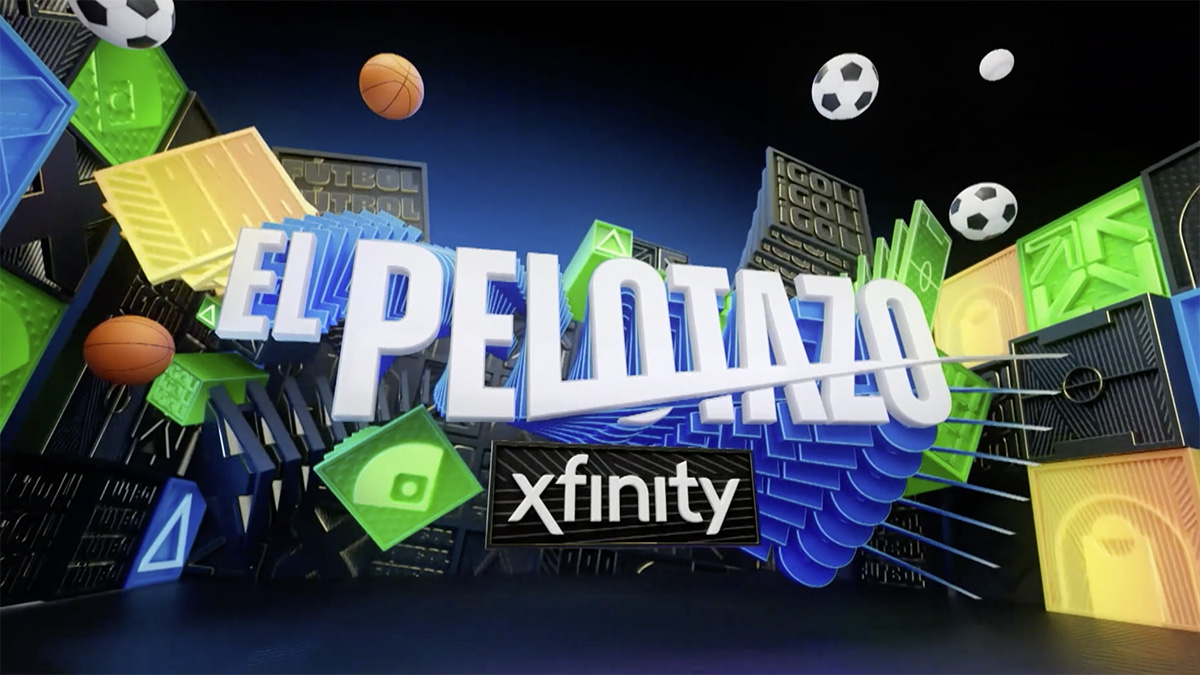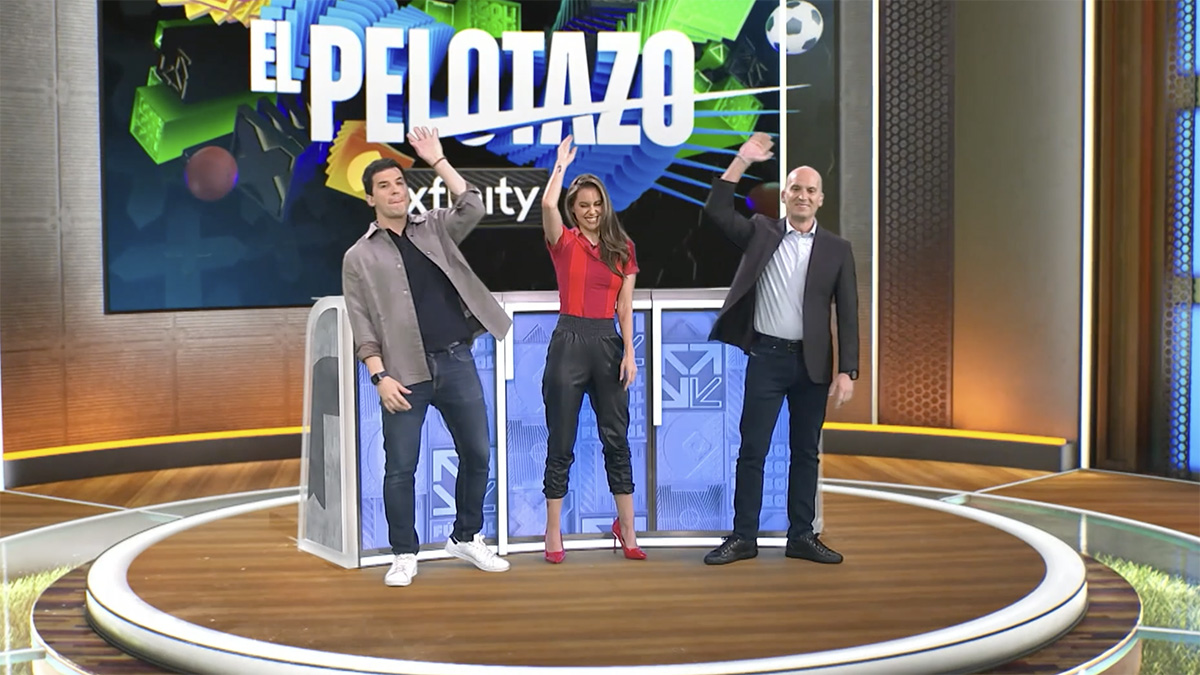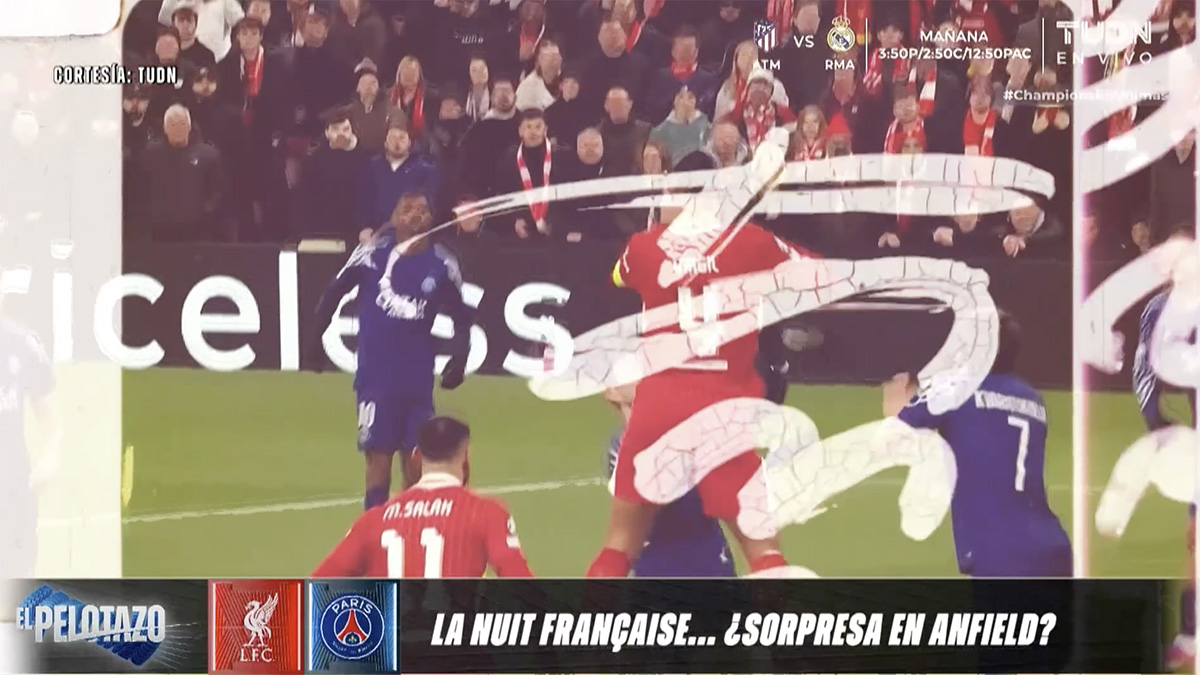Bite-sized and bold: How Telemundo’s ‘El Pelotazo’ is breaking the sports programming playbook

Subscribe to NewscastStudio for the latest news, project case studies and product announcements in broadcast technology, creative design and engineering delivered to your inbox.
Every night at midnight, when primetime sports coverage has wrapped and highlight shows have run their course, Telemundo Deportes makes an unconventional move: it goes live.
The network’s new sports program “El Pelotazo” isn’t merely occupying a challenging time slot, it’s reimagining sports programming in an era where audience attention is fragmented across dozens of platforms.
The first thing you notice when watching the show is that this isn’t a typical highlights program.
Gone are the sedentary panel discussions and locked-down camera setups. Instead, dynamic camera movements create visual interest that feels more TikTok than traditional TV. Segments are concise, punchy and designed to travel across platforms long after the linear broadcast ends.
“We understood the time where this show is airing, obviously at midnight,” explained Joaquin Duro, EVP of sports at NBCUniversal Telemundo Enterprises, in an interview with NCS. “The segments are shorter, more dynamic, bold, with a different play of camera angles just to give it a little bit more of a social media feel.”
This approach represents a rethinking of sports programming’s larger distribution strategy. While many networks still treat digital as an afterthought – taking TV content and retrofitting it for social platforms – Telemundo has flipped the model.
“El Pelotazo” is designed from inception to exist as a multi-platform entity.
“You can tell when something has been done for another platform,” Duro observed about poorly executed cross-platform content. “As you go through your feed, you can tell what is not natural for the platform.”
What makes Telemundo’s approach particularly notable is how it’s informed by audience data. Hispanic viewers “over index in mobile consumption” and “over index on social media consumption,” according to Duro.
Rather than fighting these trends, “El Pelotazo” and its hosts, Verónica Rodríguez, Pablo Mariño and Diego Arrioja, embrace them.

The show’s formula appears to be working. After a short stint on air, Duro noted increasing ratings and significant social media engagement. One segment called “DT” (Director Técnico, or coach), featuring Pablo Mariño delivering tough love to underperforming sports figures, has already gained traction online and is being considered for expansion into a standalone show on Telemundo’s upcoming FAST channel.
“We’ve seen the increase not only in ratings from a daily basis, but also in that engagement, in that consumption,” Duro said. “Our talent is surprised at the amount of followers they’re getting every day with some of the topics on social media.”
The multi-platform revenue strategy
In the fragmented media landscape, the business model for a show like “El Pelotazo” is necessarily complex. When asked whether the priority is engagement or monetization, Duro doesn’t hesitate: “The answer is both — and whatever comes first.”
Telemundo’s approach involves creating what Duro called “media playbooks” for their sales team — comprehensive strategies for monetizing content across every platform where it appears. While CPMs and monetization models vary by platform, the interconnected nature of the content ecosystem means that success in one area drives success in others.
“If you create engagement, and then that engagement creates additional eyeballs, some views, either on social or on linear, then that ties into the monetization aspect,” Duro explained.
“El Pelotazo” is also notable for what it represents in the broader industry context. At a time when many media companies are pulling back from live programming and production investments, Telemundo is doubling down.
“In a world where maybe others are cutting live programming and moving maybe out of the country, Telemundo is making a statement that sports is here, sports life is here,” Duro asserted. “It drives consumption, it drives audiences, it drives sales, higher CPMs.”
The show is airing seven days a week, a significant commitment for a midnight broadcast. Duro noted this is to ensure an ongoing conversation with viewers that builds momentum over time.
“Sports happen every single day, and as fans, we want to hear about sports every single day,” said Duro. The daily format allows Telemundo to develop storylines around its extensive portfolio of sports rights, which includes the NFL, NBA, Premier League, Chivas, U.S. Soccer and the upcoming FIFA World Cup.
The production process


The visual language of “El Pelotazo” employs a kinetic visual style that immediately signals to viewers they’re watching something different. Camera operators move freely around the virtual environment, with handheld shots with shake and roughness.
This approach wasn’t implemented just for aesthetic reasons. It’s a calculated response to how content is consumed on social platforms, where visual dynamism is critical for stopping scrollers mid-feed.
The graphics package follows this same philosophy. Rather than the information-dense chyrons and lower thirds that characterize most sports broadcasts, “El Pelotazo” employs design elements that feel more aligned with social media aesthetics — bold, simple and instantly legible even on a small screen.
To make “El Pelotazo” possible, Telemundo has relied on rethinking how to use their current production capabilities in more innovative ways
“We got very creative here with the teams that we had and with current personnel,” noted Duro, who joined Telemundo Deportes in October after a career focused on streaming and digital media.
This background gives Duro a unique perspective on production approaches.
“I have the consumption of the content, how our audience consumes the content, how you need to produce a little bit differently” at the forefront, he explained.
The result is a show that maintains Telemundo’s production standards while reimagining the presentation.
“We produce everything with the same quality, regardless if it goes to a FAST channel, like we did for the Olympics, what we did for the World Cup or we’re doing for news,” Duro explained.
As viewers continue to fragment across platforms and attention spans grow shorter, “El Pelotazo” may represent not just Telemundo’s future but a blueprint for sports media’s next evolution — one where the midnight broadcast is just the beginning of a content journey that unfolds across platforms for days afterward.
“We’ve been one of those companies that we’re here to try new things all the time and whatever sticks, sticks and then we keep pushing,” said Duro. “I think that makes it more fun to be honest.”
Subscribe to NewscastStudio for the latest news, project case studies and product announcements in broadcast technology, creative design and engineering delivered to your inbox.





tags
Joaquin Duro, NBCUniversal, NBCUniversal Telemundo Enterprises, telemundo, Telemundo Deportes
categories
Heroes, Programming, Sports Broadcasting & Production